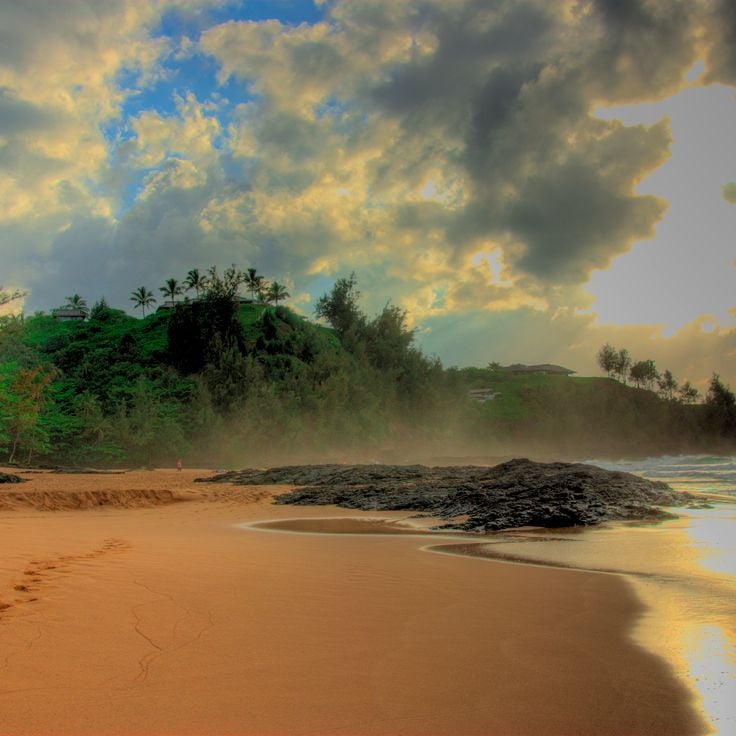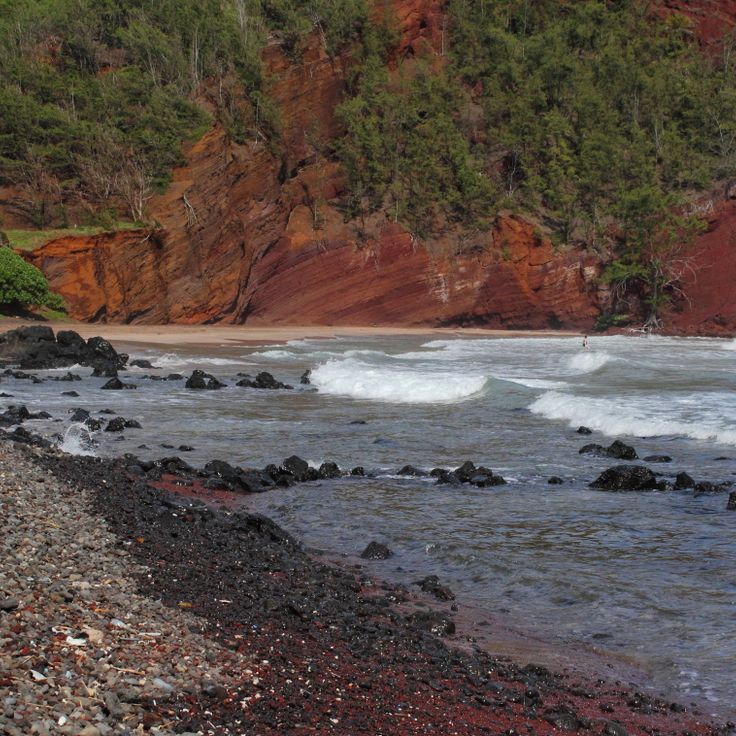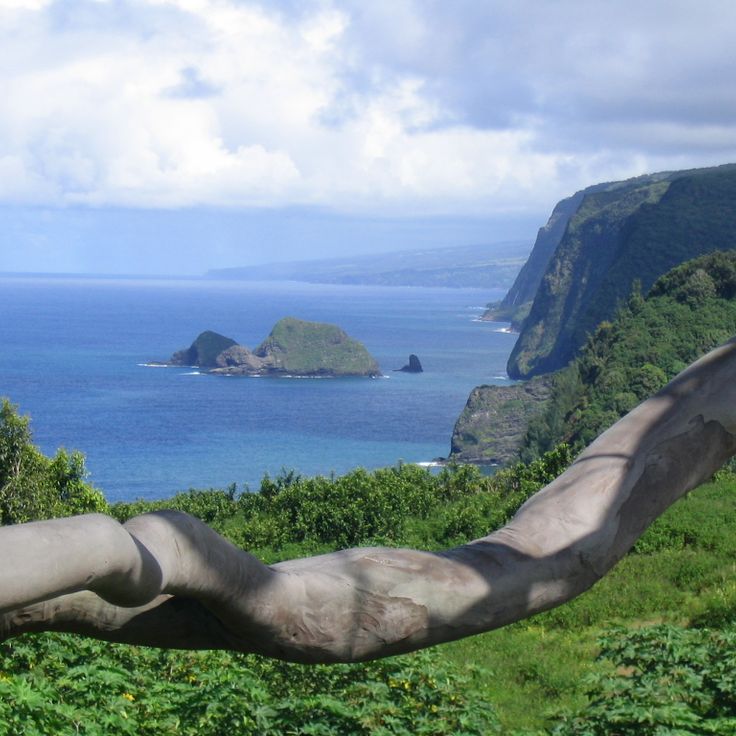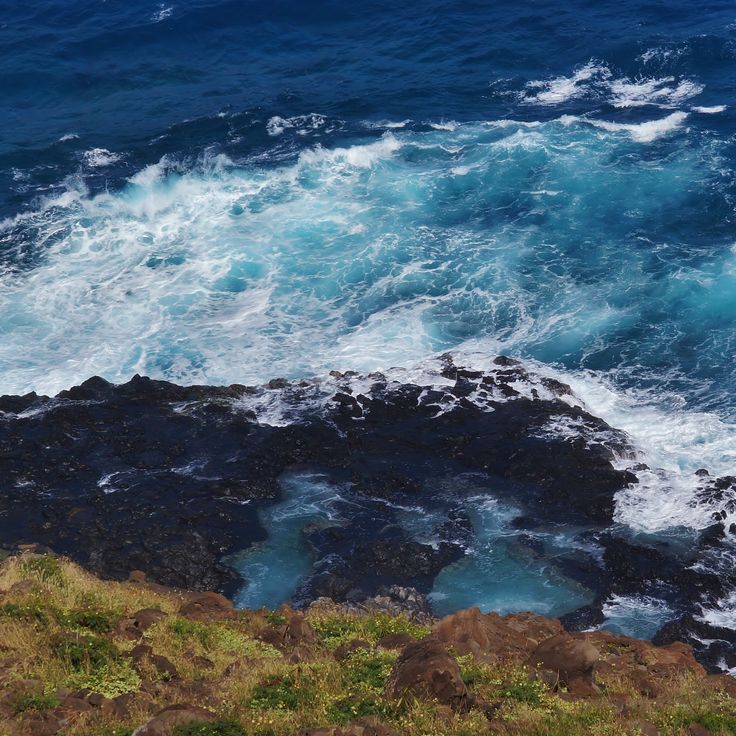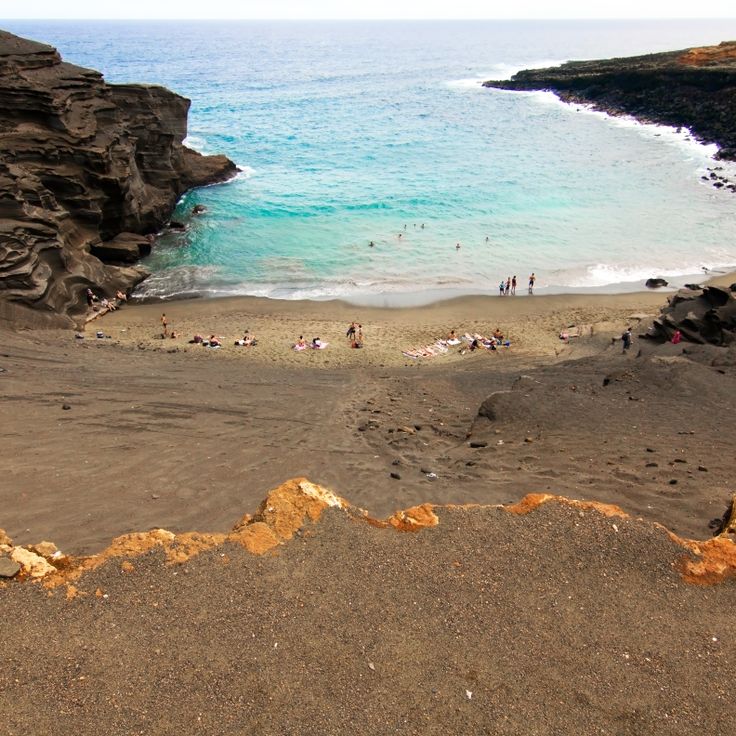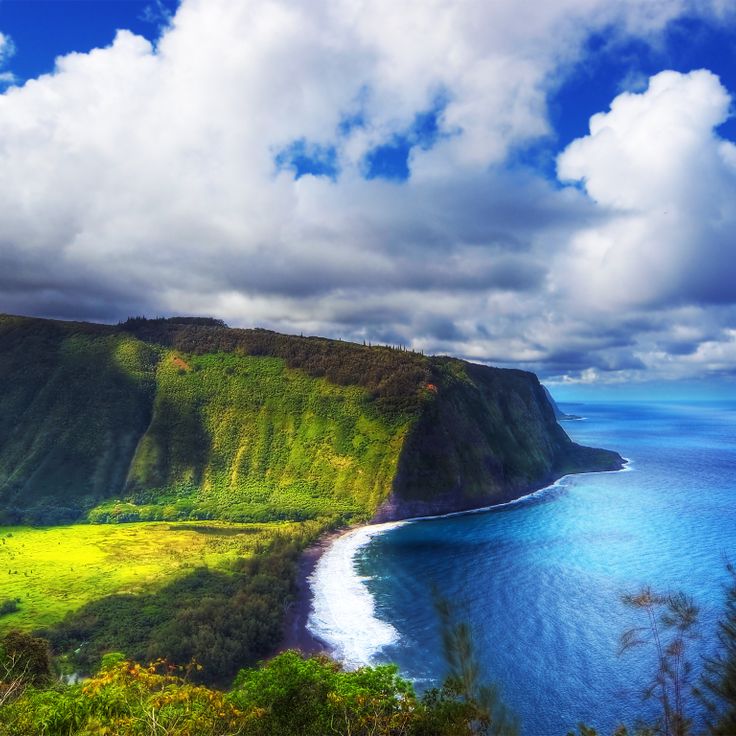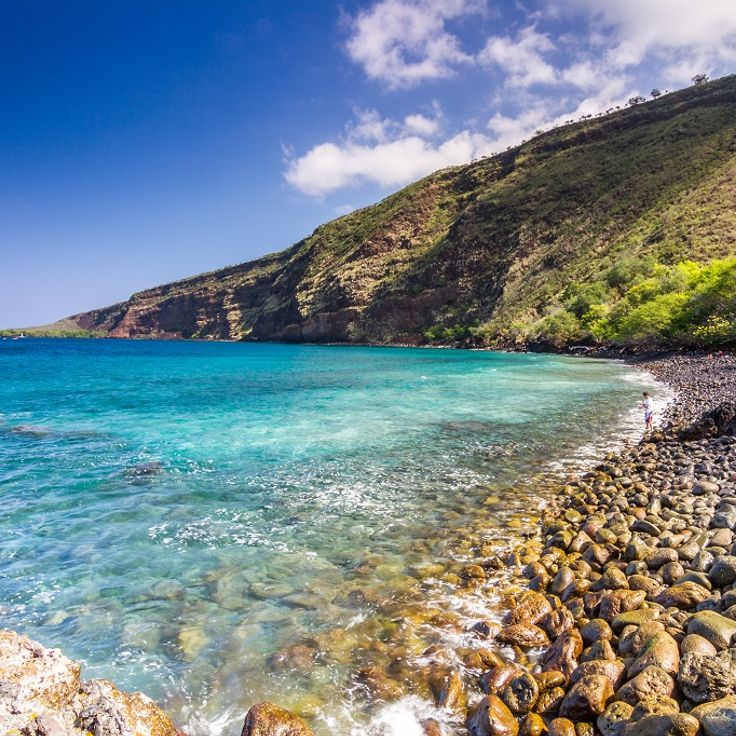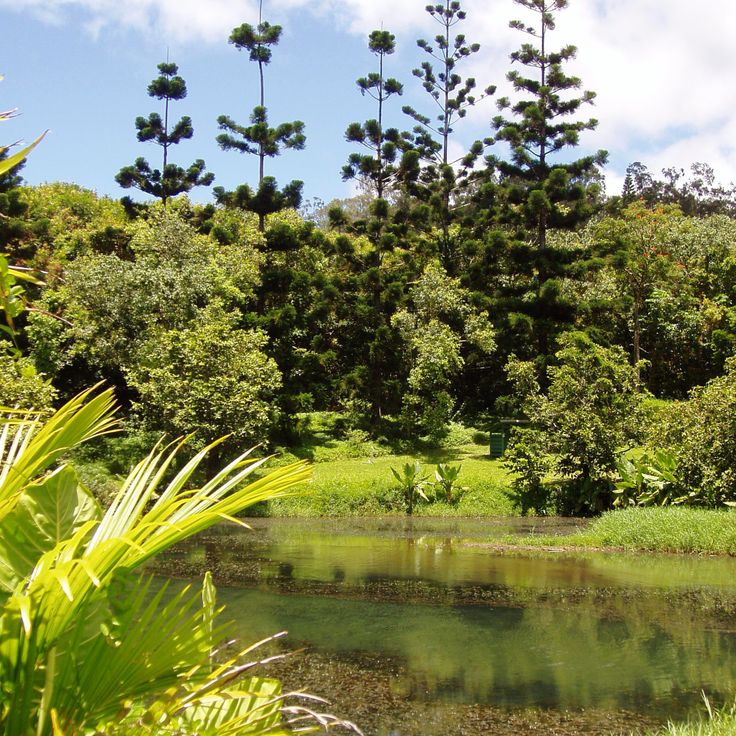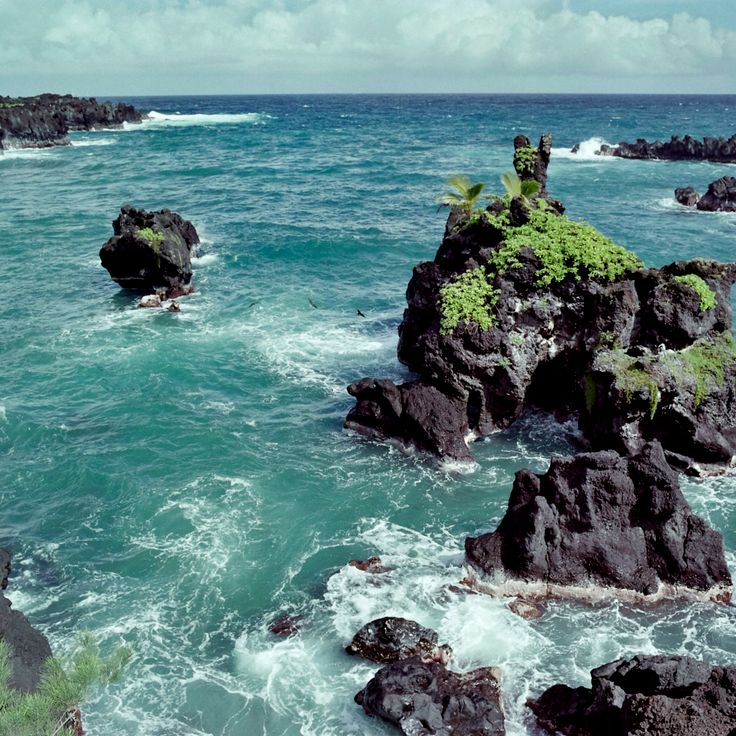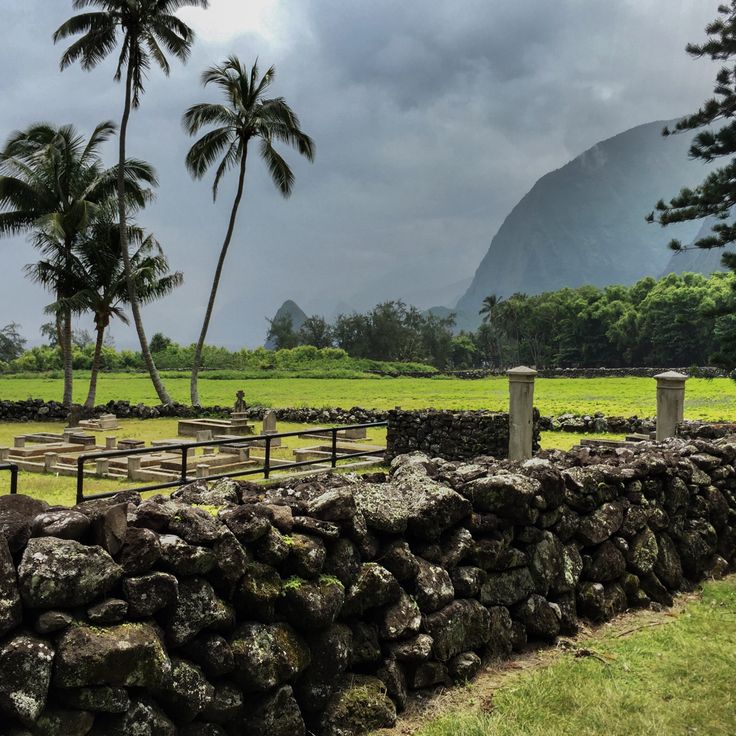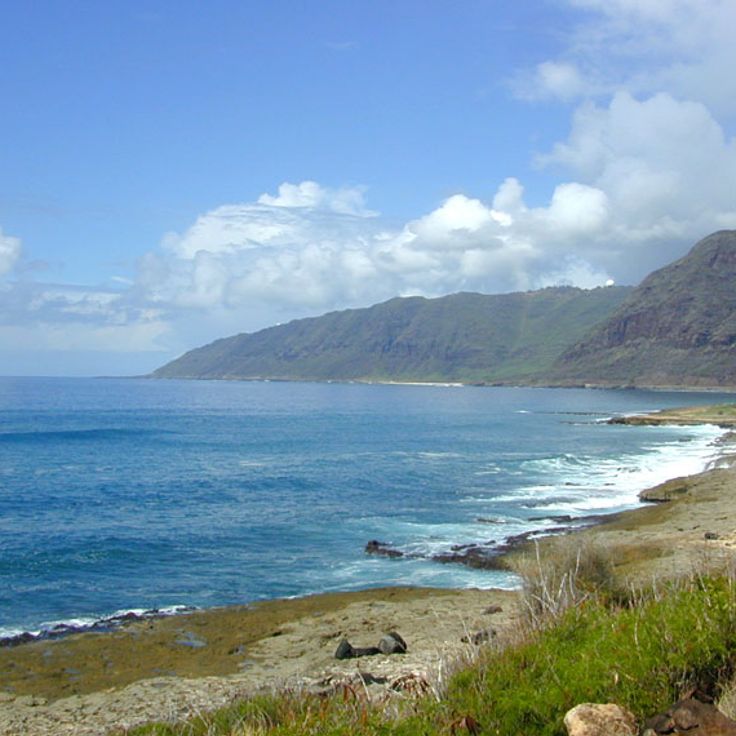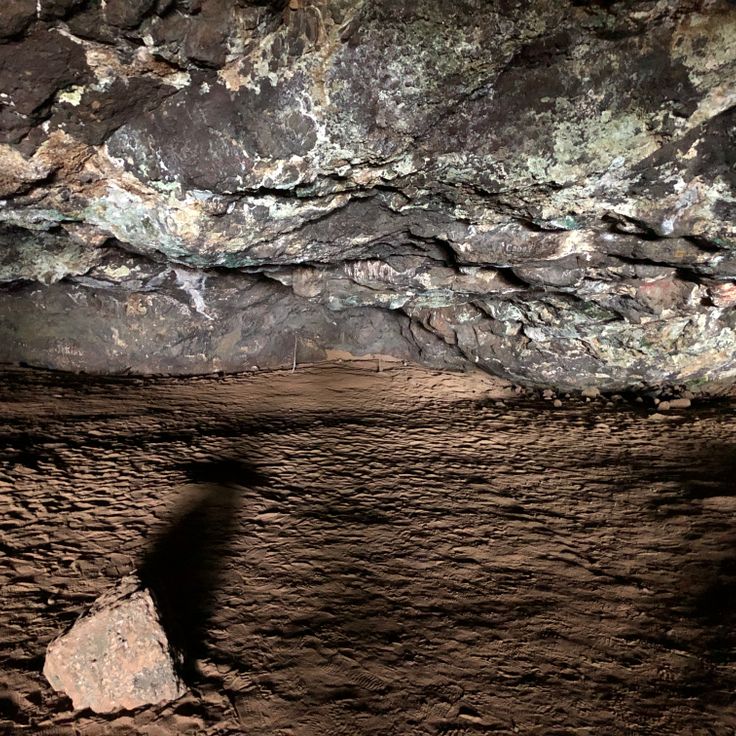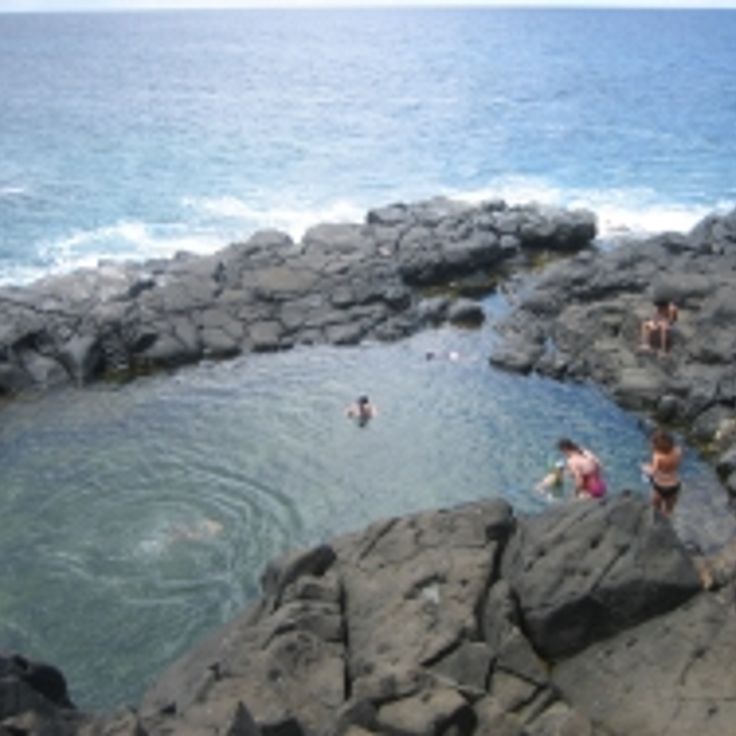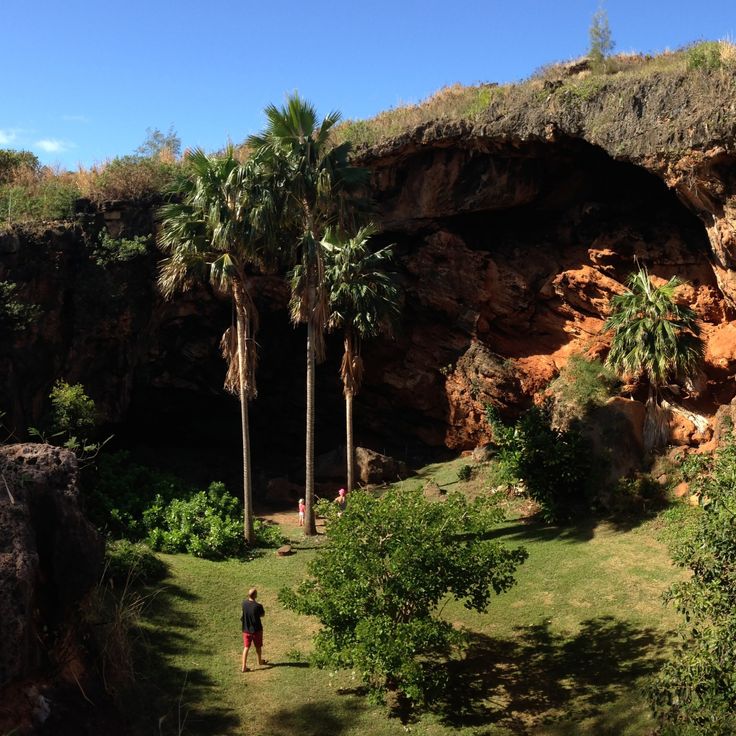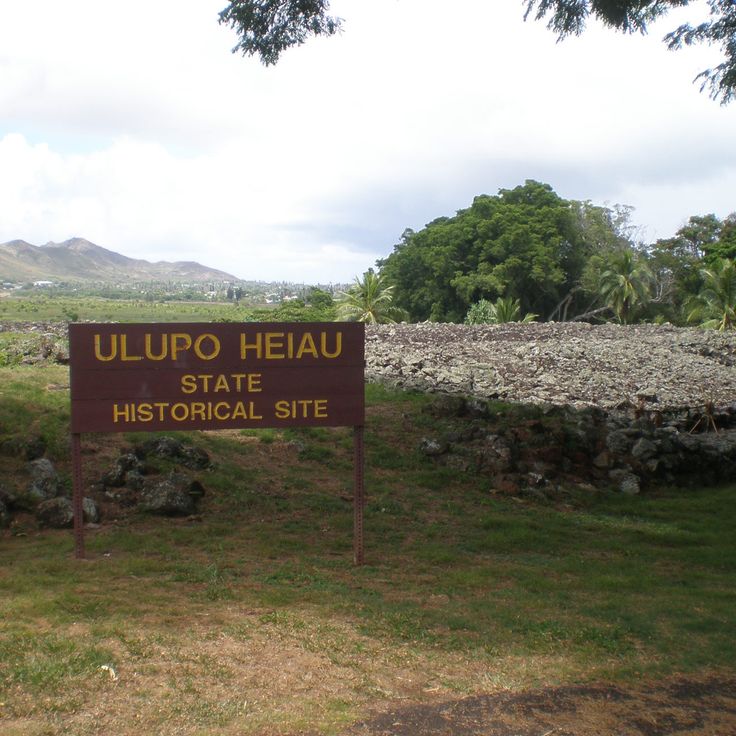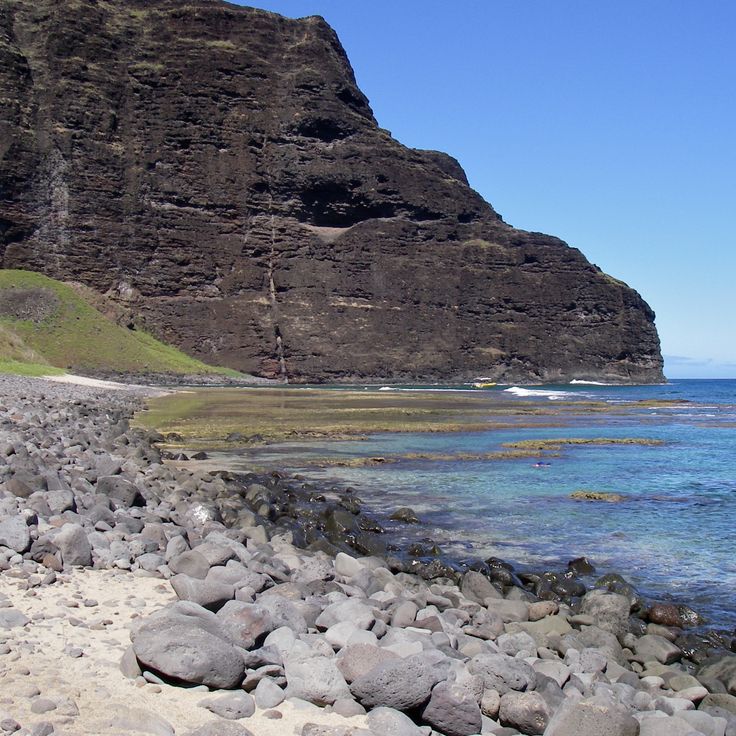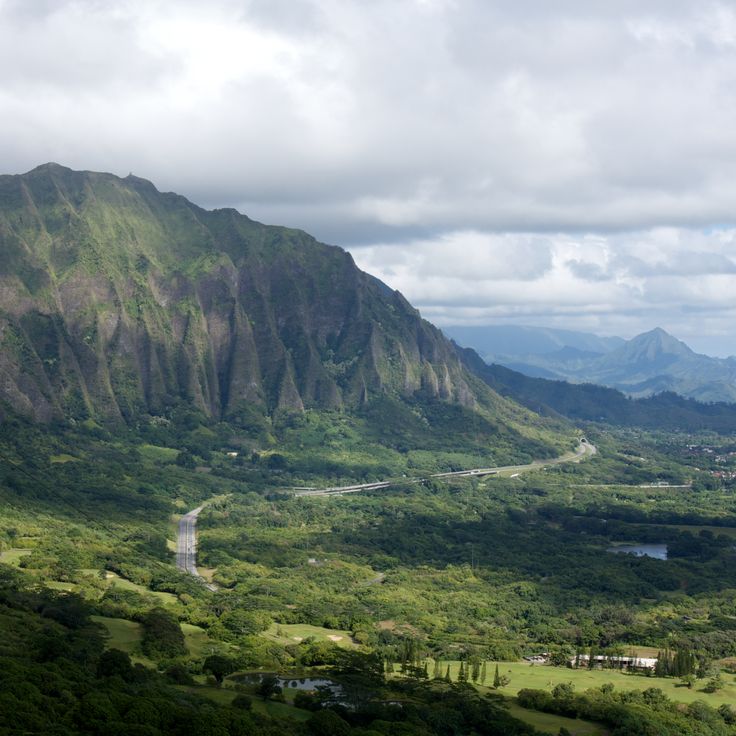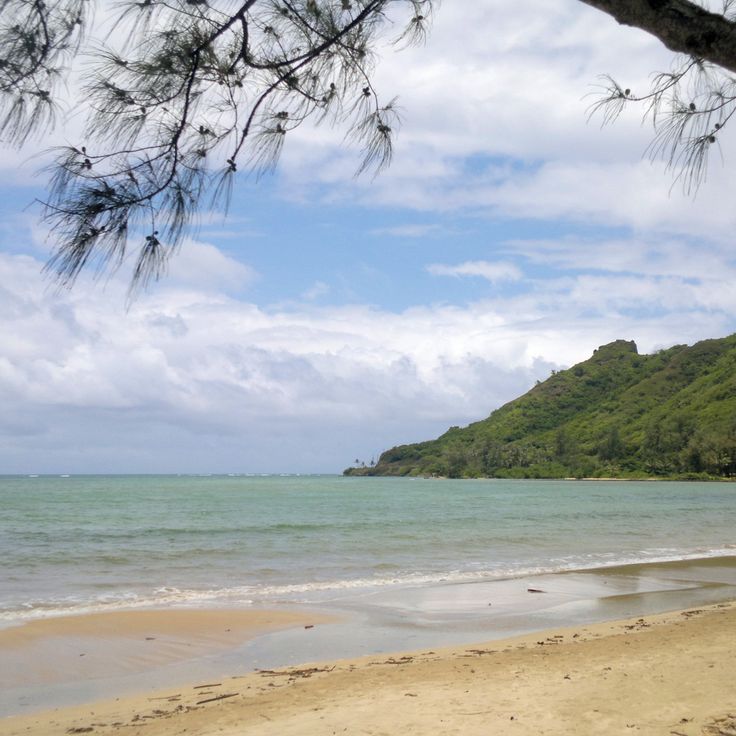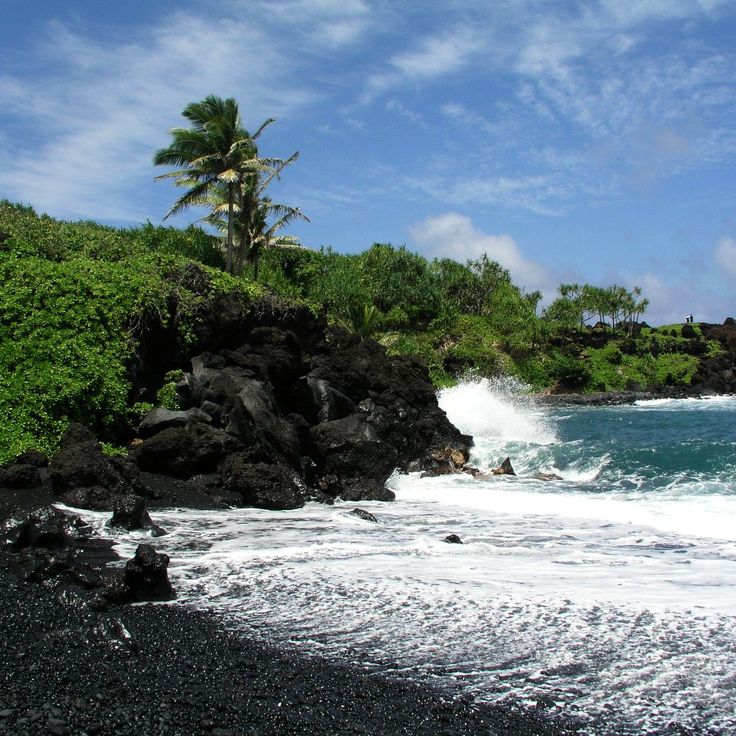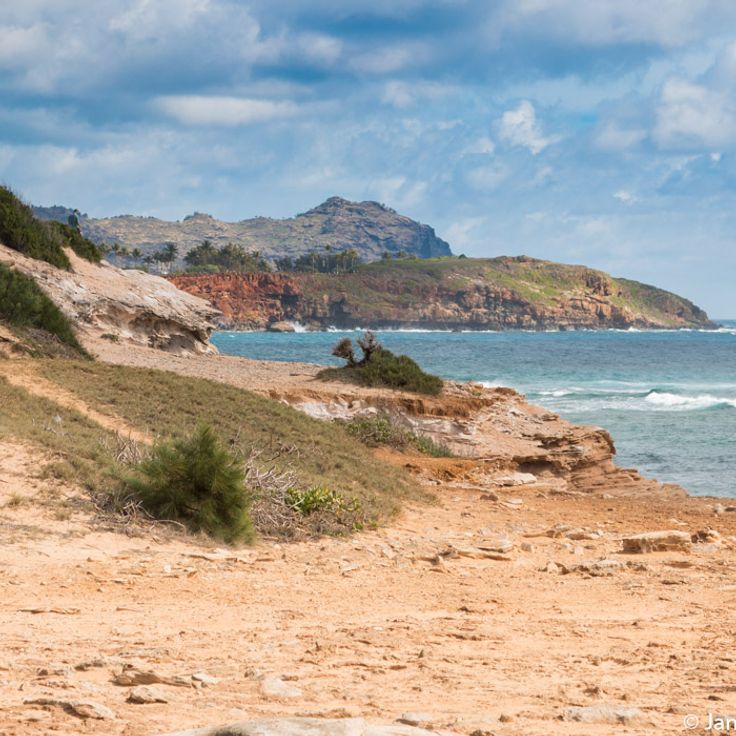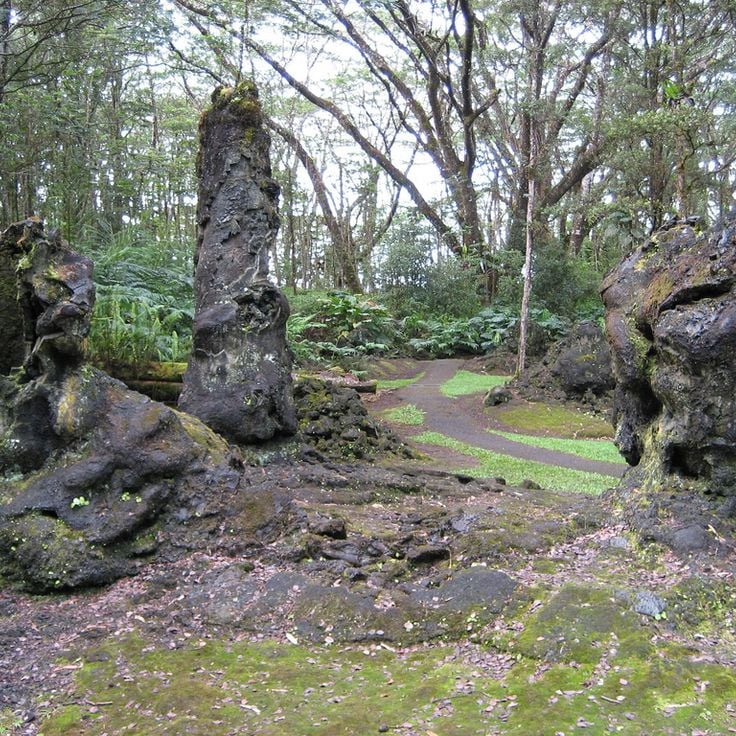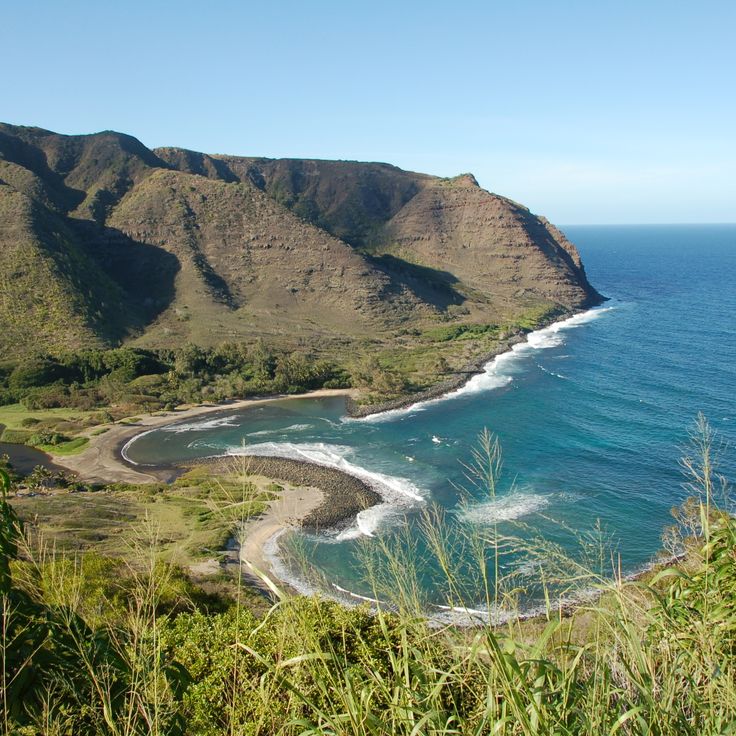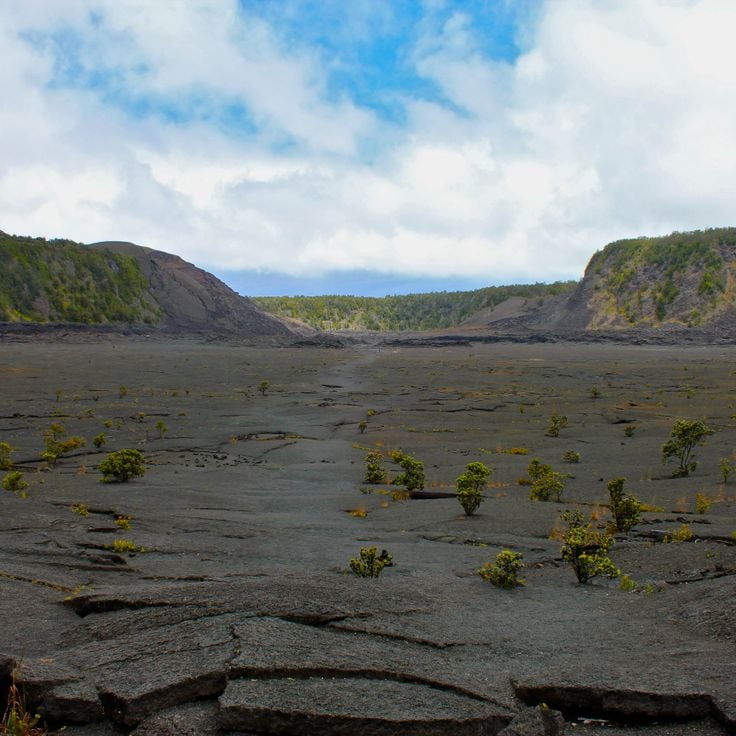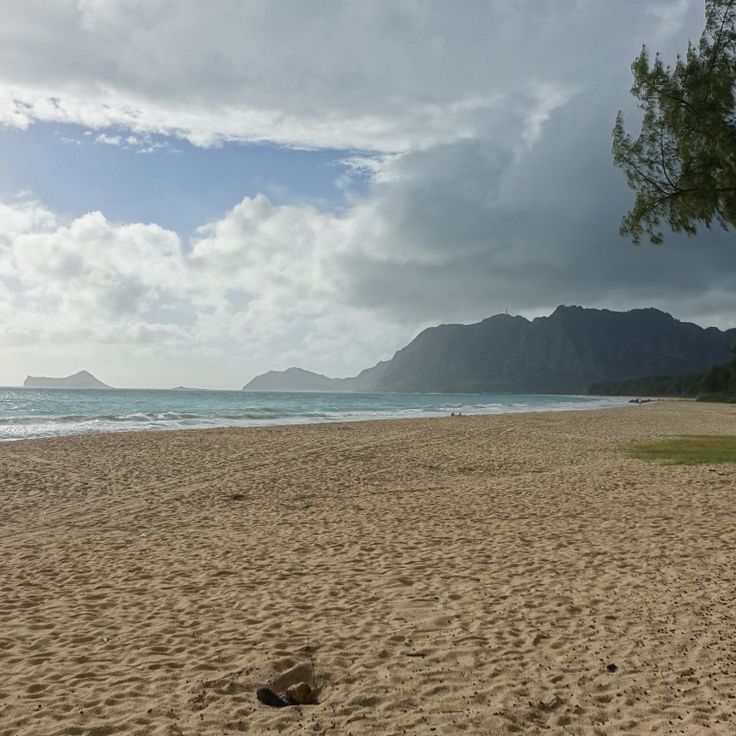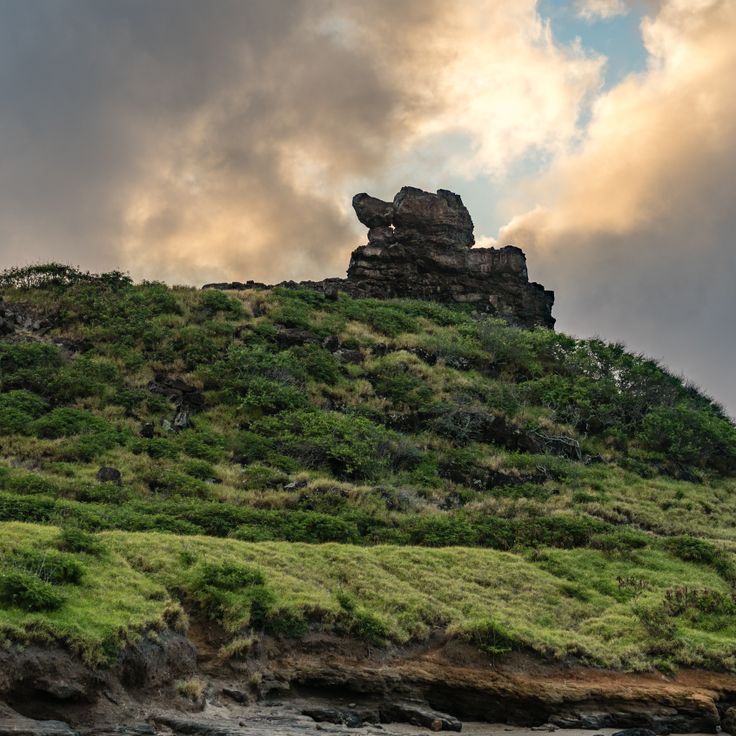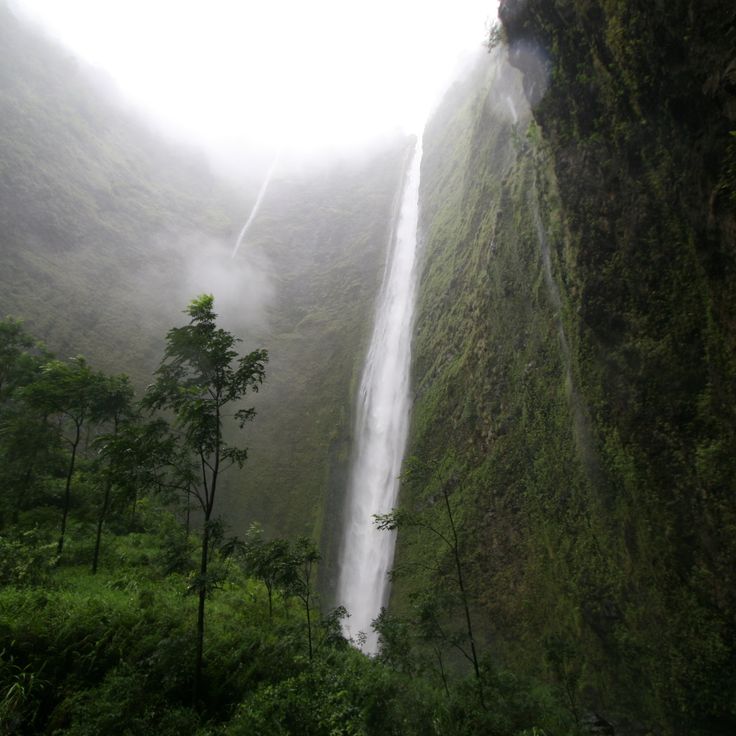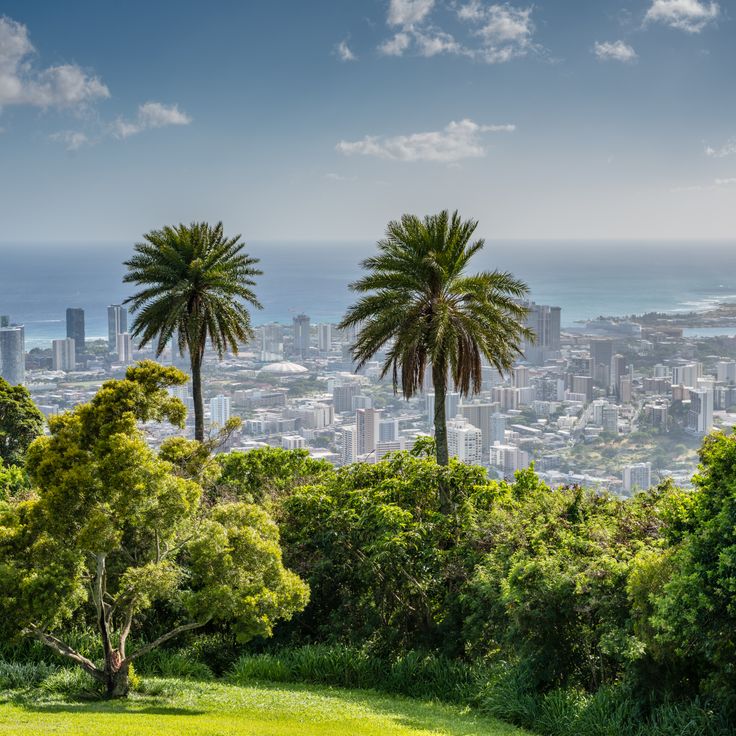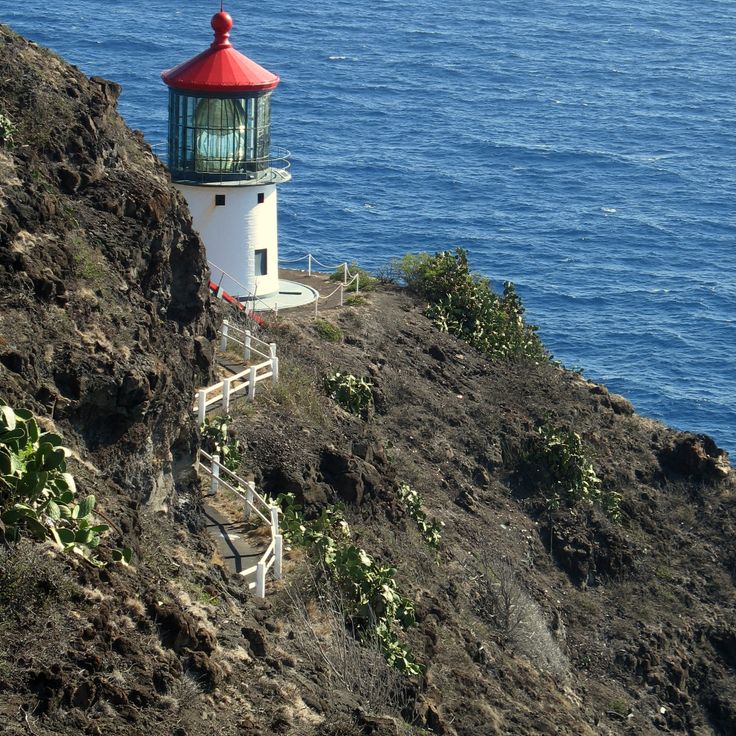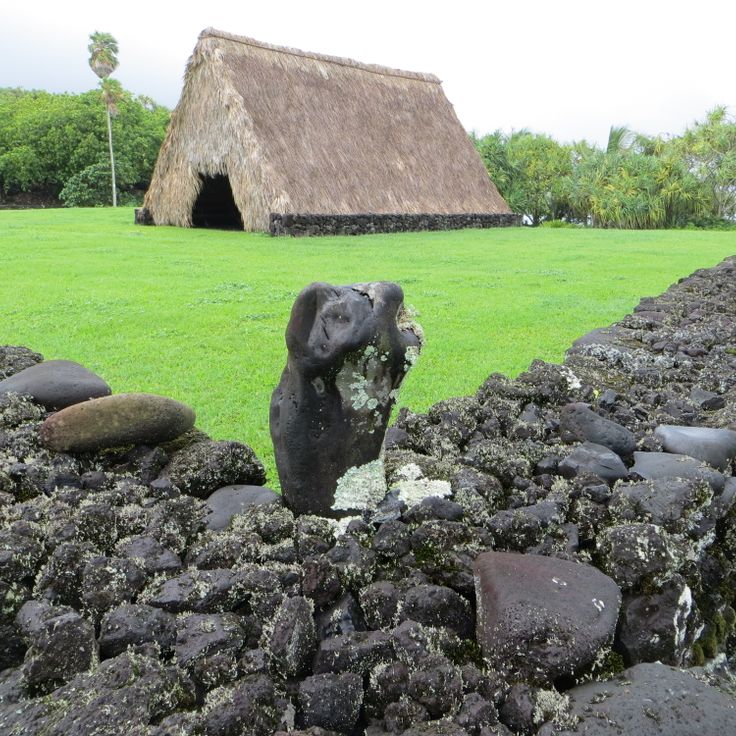The Hawaiian Islands offer beaches with white, black, and red sand, formed through volcanic activity and coral erosion. Coastal areas display tide pools, sea caves, and lava formations. Inland, hiking trails lead through rainforest valleys to waterfalls and historic Heiau temples, which served as ceremonial sites for the Polynesian inhabitants. The volcanic geology has created lava tubes, craters, and calderas that are now accessible to visitors. Botanical gardens preserve native plant species, while archaeological sites like ancient settlements and petroglyph fields provide insights into pre-European history. The islands also feature limestone caves with marine fossils and reefs suitable for snorkeling.
Kauapea Beach stretches 800 meters along the northern coast of Kauai, featuring white sand and turquoise waters. Swimming is primarily safe during the summer months from May to September when waves are calmer and currents subside. During winter months between October and April, high surf and dangerous currents can make ocean entry hazardous. Access requires a steep trail descent through tropical vegetation, taking approximately 10 to 15 minutes. The cove is surrounded by green cliffs and offers views of the Pacific Ocean.
Kaihalulu Beach sits on Maui's eastern coast in a sheltered cove below Kauiki Head. Volcanic rock from the surrounding area gives the sand its distinctive red color. Tall basalt cliffs encircle the cove and provide protection from Pacific waves. Access is via a narrow trail along the cliffs that passes through dense vegetation. The water displays various shades of blue, creating contrast with the dark red sand. The cove is located near the historic town of Hana.
Pololu Valley is located at the northern tip of Big Island and provides access to a black sand beach of volcanic origin. A 1.2-kilometer trail descends through dense rainforest where numerous native plant species grow. The descent to the beach requires moderate physical fitness, as the path is steep and can become slippery when wet. From the cliffs above the valley, expansive views of the island's north coast unfold.
The Makapu'u Tide Pools are natural depressions formed in volcanic rock along Oahu's eastern coastline. These pools fill with seawater during high tide, creating protected areas where visitors can swim and observe marine life. Small fish, sea urchins, and crabs inhabit these pools. Access requires a short hike over uneven terrain. Conditions vary depending on tide levels and wave activity.
Plage de Papohaku extends for three kilometers along the western coast of Molokai. The fine light-colored sand is shaped by trade winds that regularly blow across the shoreline. The ocean displays calmer conditions during the winter months from October to April, while stronger currents and higher waves occur in the summer months. The beach sits in a relatively remote zone of the island, resulting in low visitor frequency. The vegetation in the hinterland consists of low shrubs and scattered trees.
This bay on the southern tip of Hawaii's Big Island features greenish sand created by olivine crystals. The mineral originates from volcanic rock formations surrounding the beach. Steep cliffs of solidified lava frame the shoreline and provide shelter from ocean currents. Access requires a five-kilometer hike from South Point along an exposed coastal trail. The geological conditions result from volcanic processes where olivine crystallized from magma and gradually separated from surrounding basalt through erosion. The concentration of these heavy minerals creates the distinctive coloration that distinguishes Papakolea from typical Hawaiian beaches.
The Waipio Valley Lookout provides views over a valley stretching several kilometers, surrounded by steep cliffs. The valley contains multiple waterfalls, traditional taro fields, and archaeological sites that indicate early Hawaiian settlement. This location served for centuries as an important agricultural and political center for Hawaiian rulers.
Kealakekua Bay sits on the western coast of Big Island and offers a protected marine area with a preserved coral reef. The clear waters host numerous tropical fish species and make the bay a popular snorkeling location. On the northern shore stands a white obelisk monument commemorating the arrival of Captain James Cook in January 1779. Cook was killed here during his third Pacific voyage by Hawaiian residents. The bay forms part of a marine conservation district and can be reached via a steep hiking trail or by boat.
Ho'omaluhia Botanical Garden spans 160 hectares at the base of the Ko'olau Mountains. The facility displays plant collections from various tropical regions including Africa, the Americas, Melanesia, Polynesia, and Malaysia. The garden features palms, aroids, and native Hawaiian plant species. An artificial lake serving as a flood retention basin forms the centerpiece of the park. Visitors will find walking trails, picnic areas, and opportunities for bird watching.
Wai'anapanapa State Park stretches along the Hana coastline and features a beach of black volcanic sand. The grounds include several caves formed by solidified lava flows, as well as the remains of a traditional Hawaiian heiau. Dark basalt cliffs frame the shoreline, while trails wind through the natural vegetation and provide access to the various geological formations.
Kalaupapa National Historical Park is located on a remote peninsula on the north coast of Molokai. This facility served as an isolation settlement for people with Hansen's disease from 1866 to 1969. Father Damien de Veuster dedicated his life to caring for the residents and died of the disease himself in 1889. The museum documents the medical history, daily life of patients, and the development of treatment methods. The settlement includes churches, cemeteries, and former residential buildings. Some former patients still live in the community today.
Kaena Point State Park occupies the northwestern tip of Oahu and protects an important coastal ecosystem. The reserve provides habitat for Hawaiian monk seals, an endangered species, as well as numerous seabird colonies. A hiking trail follows the rocky coastline and leads to a traditional Hawaiian heiau, a religious ceremonial site. The landscape features volcanic rock formations, salt-tolerant vegetation, and the open Pacific Ocean. Visitors can observe native wildlife and learn about the cultural significance of this remote location.
Maniniholo Dry Cave is located on the north shore of Kauai and formed through volcanic activity. This cave consists of black basalt rock and extends approximately 30 meters into the cliff. The name comes from Hawaiian legends about the Menehune, mythological beings considered master builders. The cave is freely accessible and sits directly along the road to Hanalei. Visitors can explore the geological formations and dark chambers. Light penetrates only at the entrance, while the interior remains in darkness.
Queen's Bath is a natural tide pool formed in the volcanic rock coastline of Kauai. Ocean water fills this geological formation, creating a swimming pool whose depth and water level vary with the daily tides. Access is via a hiking trail through private properties on the north shore of the island. During calm sea conditions, the pool offers swimming opportunities, while high surf and winter storms can create dangerous conditions.
The Makauwahi Cave forms the largest limestone cave system on Kauai Island. This archaeological site preserves remains of extinct bird species and pre-colonial Hawaiian tools. Scientists have conducted excavations since the 1990s, yielding insights into ecological changes over the past 10,000 years. The reserve now serves as a research center and conservation area where native plant species are being reintroduced.
Ulupo Heiau is a historic ceremonial site built from lava stones on the island of Oahu. This traditional Hawaiian temple served religious practices and community gatherings. The structure was constructed using large stone blocks without mortar, demonstrating Polynesian architectural techniques. Archaeological research indicates that this location was used for spiritual ceremonies over several centuries. Visitors today can view the remains of the stone structure and learn about the religious traditions of the Hawaiian people.
Nualolo Kai State Park preserves the remains of a historic Hawaiian fishing village on the northwestern coast of Kauai. The archaeological site includes stone foundations, terraced structures, and temple platforms that document a settlement inhabited for several centuries. Residents utilized the protected waters and coral reefs for fishing and gathering marine resources. The park is accessible only by boat or via the Nualolo Trail. Coastal waters host numerous tropical fish species, sea turtles, and seasonally migrating humpback whales.
The Nu'uanu Pali Lookout sits on a mountain ridge in the Ko'olau Range at approximately 300 meters elevation. This historic site was the location of the 1795 Battle of Nu'uanu, where King Kamehameha I gained control of Oahu. From this vantage point, visitors observe the Windward Coast, Nu'uanu Valley, and the communities of Kailua and Kāne'ohe below. Strong trade winds channel through the pass, often exceeding speeds of 50 kilometers per hour, shaping the climate of this area.
Kahana Valley State Park protects a forested valley on the eastern coast of Oahu. Several trails wind through dense tropical rainforest and provide opportunities to observe native flora. Archaeological remains testify to settlement by Hawaiian communities who practiced agriculture here. The valley supports native bird species and offers insight into traditional irrigation systems and cultivation methods.
The Hanapepe Swinging Bridge was built in 1911 and spans the Hanapepe River. This historic structure connects both sides of the Hanapepe Valley and allows pedestrians to cross the river. The bridge has served as an important pathway in this region of Kauai for over a century and represents early 20th-century engineering.
Honokalani Beach is located within Wai'anapanapa State Park and features black sand formed by lava flows that cooled upon contact with the ocean. The coastline consists of volcanic rock formations shaped by erosion and volcanic activity. The area includes several sea caves created by wave action and geological processes. The park provides access to coastal trails that follow the cliff formations along the shore.
Kaiolohia Beach is located on the north shore of Lanai and is known for its strong ocean currents that make swimming dangerous. On the shore lies the wreck of a 1940 Liberator cargo ship that ran aground here. Access to the beach is via unpaved roads through the island interior. The remote location and the rusted ship wreck give this stretch of coastline a distinctive character. Visitors should heed warnings about the currents.
Lava Tree State Park preserves the remnants of a forest engulfed by lava flows in 1790. The lava encased tree trunks and formed hollow columns of solidified rock after the wood burned away. A maintained loop trail guides visitors through this outdoor museum of volcanic activity, where they can observe the vertical lava formations and the tropical vegetation that has since developed around them.
Halawa Valley on Molokai preserves remains of Hawaiian temples and agricultural terrace systems. Local guides share knowledge about traditional cultivation of taro and other crops, as well as the spiritual significance of the archaeological sites. The valley served as a settlement area for centuries and demonstrates the adaptation of Polynesian populations to tropical growing conditions.
Puu Pehe rises as a distinct rock tower from the Pacific Ocean off the southern coast of Lanai. This geological formation carries the name Sweetheart Rock and is associated with a Hawaiian legend about forbidden love between a young warrior and a woman from another village. The rock stands approximately 80 feet above sea level and remains visible from Hulopoe Beach. Visitors can observe the formation from nearby viewpoints, shaped by erosion and volcanic activity over thousands of years.
The Kilauea Iki Trail traverses a solidified lava lake within Hawaii Volcanoes National Park. This 6.4-kilometer loop begins at the crater rim and descends through a rainforest to the crater floor, where hikers walk across the hardened surface of the lava lake formed during a massive eruption in 1959. The trail provides opportunities to observe steam vents still rising from cracks in the lava rock and to explore the distinctive formations created by cooling lava.
Bellows Field Beach Park stretches along the eastern shore of Oahu, offering a wide sandy beach with fine white sand. The water remains shallow for extended distances, making swimming and wading easy. The facility sits in a less developed coastal section, drawing fewer visitors than the southern shore beaches. Shade trees line portions of the shore. The waves suit bodyboarding, while wind conditions attract kitesurfers.
Pele's Chair is a natural rock formation on the southeastern coast of Oahu, regarded in Hawaiian mythology as a resting place of Pele, the volcano goddess. This solidified lava structure rises at the cliff edge above the Pacific Ocean, offering extensive views of the coastline. According to traditional beliefs, Pele sat on this rock to observe her creations before moving on to Big Island. The formation is located near Makapuʻu Point and can be reached via hiking trails that traverse volcanic terrain.
Hiilawe Falls drops 442 meters into Waipio Valley and ranks among the tallest waterfalls in the Hawaiian archipelago. This cascade is located on private property, requiring visitors to obtain permission from landowners before accessing the site. The water flows through dense vegetation and forms a continuous curtain during periods of heavy rainfall. Access to the base of the falls involves hiking trails through tropical rainforest.
Tantalus Lookout sits at 600 meters elevation above Honolulu, providing expansive views of the city, harbor, and Pacific Ocean. This observation point is located within Puu Ualakaa State Park and accessed via the winding Tantalus Drive. After sunset, the city lights emerge to create an illuminated panorama of the urban coastline.
The Makapu'u Point Lighthouse Trail is a 3.2-kilometer paved loop road that leads to the historic 1909 lighthouse on the southeastern coast of Oahu. This walking path provides views of the Pacific Ocean and the island's coastline. The lighthouse stands on a cliff at the easternmost point of Oahu and serves as an important navigational landmark for maritime traffic. The trail accommodates hikers of varying skill levels and offers opportunities to observe humpback whales offshore during winter months.
The Piilanihale Temple is the largest surviving heiau in Hawaii, constructed in the 13th century. This religious complex spans 2 hectares within the Kahanu Garden and features massive basalt stone walls reaching heights of up to 15 meters. The site served as a ceremonial platform for Hawaiian chiefs and demonstrates the advanced construction techniques of Polynesian culture. The structure was built without mortar through precise placement of volcanic stones.
